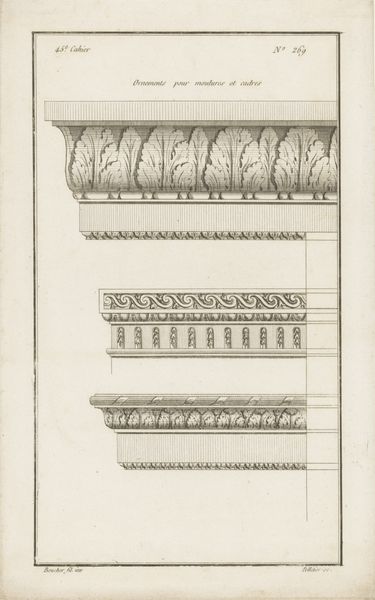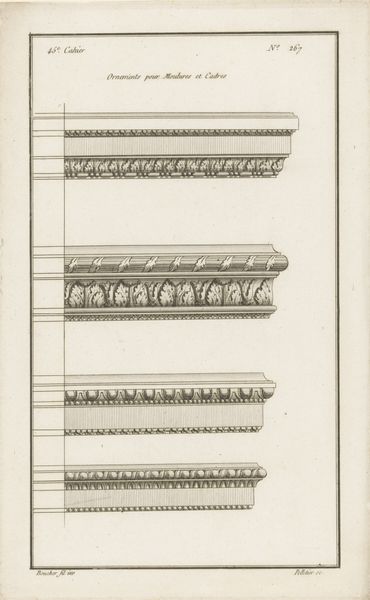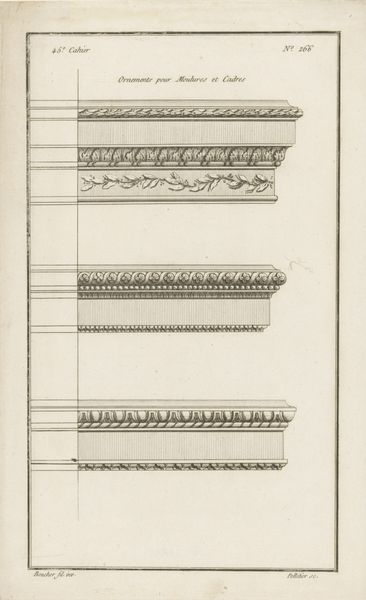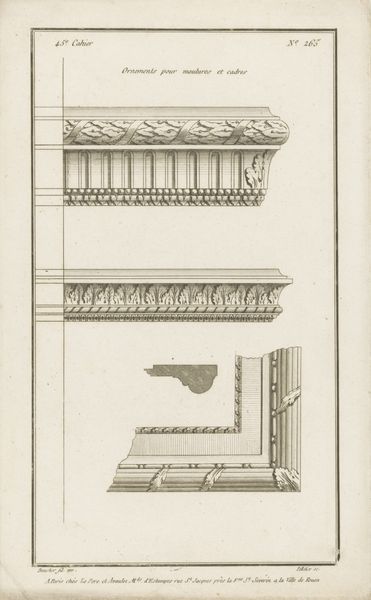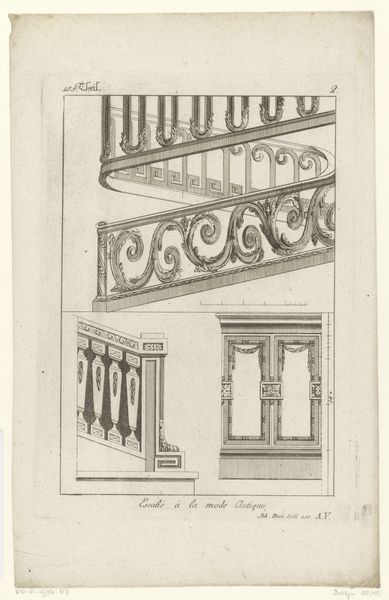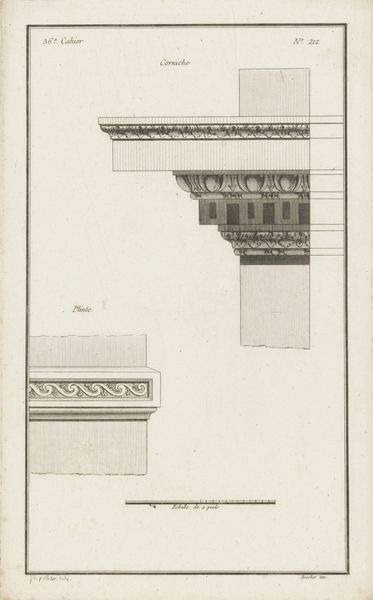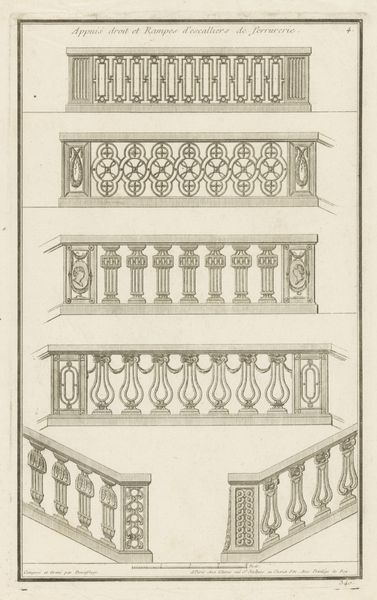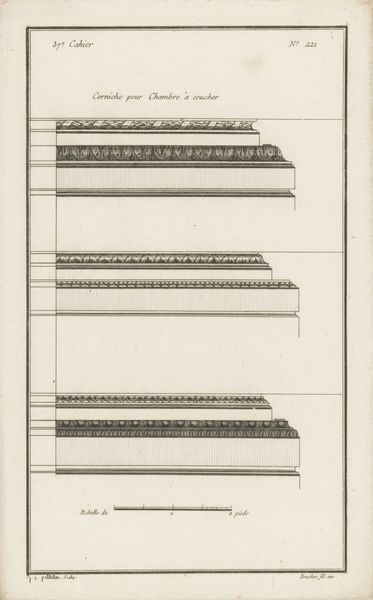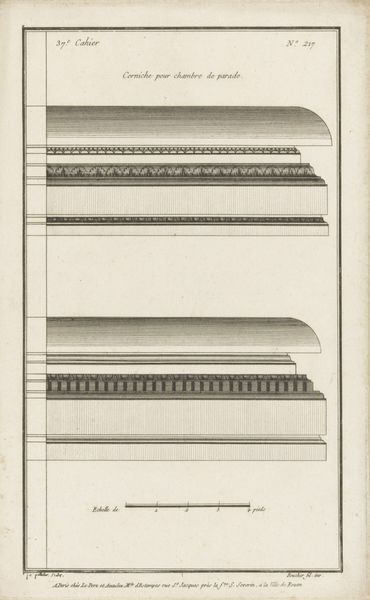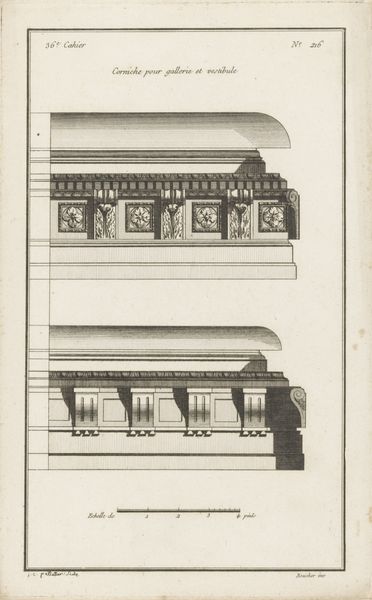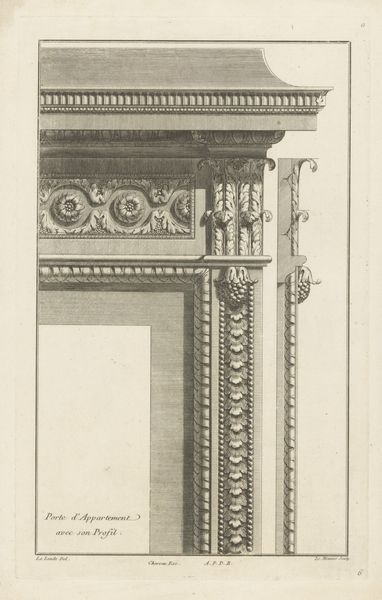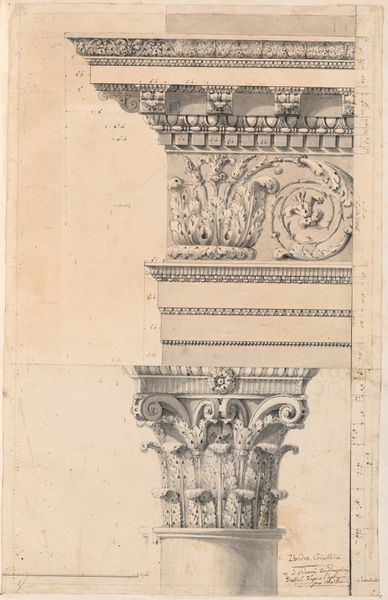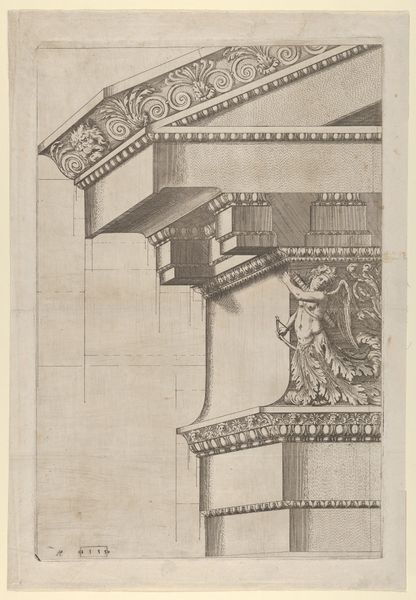
drawing, print, paper, pen, engraving, architecture
#
drawing
#
neoclacissism
# print
#
classical-realism
#
paper
#
geometric
#
pen
#
engraving
#
architecture
Dimensions: height 334 mm, width 206 mm
Copyright: Rijks Museum: Open Domain
Editor: This is "Vier lijsten" or "Four Frames," a print by Jean Pelletier, dating from between 1772 and 1779. It’s an architectural study, seemingly quite formal with the neoclassical style. What do you see in this piece beyond its apparent functionality? Curator: I see a reflection of power structures embedded in architectural design. These aren't just frames; they're symbols. Neoclassicism was favored by elites who sought to legitimize their power by aligning themselves with the perceived "order" and "rationality" of the classical world. These ornaments served to create division, highlighting status through decorative excess available only to a few. How might we consider their implications in relation to the people who lived and worked within these spaces? Editor: That’s fascinating. I hadn't considered the social implications of what I thought was purely an aesthetic choice. It makes me wonder, were these designs truly accessible, even as aspirations, for those outside the elite? Curator: Precisely. And, how does this imposition of classical ideals potentially erase or marginalize the vernacular building traditions and aesthetics of the communities where these structures were placed? What are the ways marginalized groups adapt or resist impositions by elite social structures in these Neoclassical buildings? Do we find examples in the art displayed within, in social movements staged near them, or other forms of reclamation? Editor: I see what you mean. By framing it that way, this print prompts a different reading of Neoclassical architecture—one that considers issues of access, cultural dominance, and potential resistance. Thank you. Curator: It's through these dialogues that we can reclaim art history. Considering that it can serve as a tool of liberation when viewed critically.
Comments
No comments
Be the first to comment and join the conversation on the ultimate creative platform.
